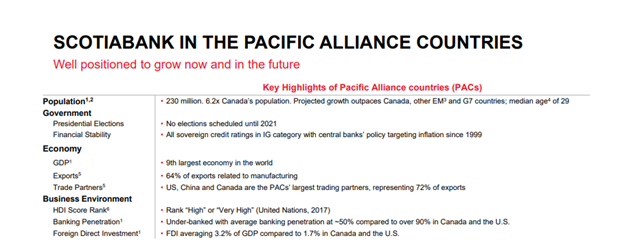Section 5 contains the language that previously appeared as Section 5. Section 5 unequivocally provides that funding for investigative, expert, or other similar services is not available in non-capital post-conviction proceedings. Section 5 explains that counsel must make "every effort" to obtain the services of experts, investigators or others who are located within 150 miles of the court where the case is pending. Section 5 delineates the information that must be included in or submitted with a motion requesting funding for expert or similar services.
Section 5 delineates the information that must be included in or submitted with a motion requesting funding for investigative or similar services. Section 5 has been revised for clarity and includes in subsections - definitions of particularized need and the standards governing a trial court's consideration of funding requests. Section 5 has been revised to provide certainty and guidance to attorneys, service providers, and trial courts. Section 5 establishes permissible compensation rates for travel for experts paid in excess of $100 per hour.
Section 5 establishes the licensure requirements for investigators. Section 5 and impose maximum limits on the amounts that may be approved in capital post-conviction proceedings and permit funding in excess of these amounts only upon clear and convincing evidence that extraordinary circumstances exist. Section 5 precludes funding for expert tests or services if the results of the tests or the expert's testimony is per se inadmissible. Section 5- delineates the information that must be included in or attached to orders authorizing funding. Section 5 - sets out the procedure that must be followed in obtaining prior approval of the request.
Section 5 provides that only those claims denied by the director will be submitted to the chief justice for disposition. This changes prior law which required the chief justice to review every request for funding involving an hourly rate in excess of $150 or an overall amount in excess of $5,000, even those requests approved by the director. Section 3 has been revised to require that the appointment order must specify lead and co-counsel and that the public defender must serve and be designated lead counsel whenever possible. Section 3 & previously appeared as Section 3 of Rule 13.
Section 3 now permits former prosecutors and judges with appropriate experience to be appointed counsel in capital cases. Section 3 has been revised to require five years participation in criminal jury trials, rather than three years representation of defendants in criminal jury trials. Section 3 has been revised to enhance the educational requirements for appointed counsel.
Section 3 has been revised to include an experience requirement applicable only to former judges. Section 3 has been revised to clarify that its scope is limited to affording compensation to appointed counsel in a proceeding challenging the inmate's competency to be executed. Section 3 provides that attorneys appointed in competency proceedings will be compensated at the same $80 rates applicable in other capital post-conviction proceedings. Section 3 clarifies that appointed counsel will not be compensated for time spent defending against a Board of Professional Responsibility action that arises from the appointment.
Section 3 precludes compensating attorneys for time spent driving to and from a clerk's office in another county for the sole purpose of hand-delivering or filing a document. Section 6- has been revised to clarify the requirements and process for submitting claims for compensation and reimbursement. Claims for compensation submitted after the 180-day period will be deemed waived and not paid.
Section 6 provides that counsel will be held to a high degree of care in record keeping and documentation of the claim. Section 6 delineates how claims are audited, approved for payment, and how payments are made. Section 6 provides that the determination of the director and/or the chief justice is final. Unlike prior law, Section 6 does not provide for an appeal to the Tennessee Supreme Court from the decision of the director or the chief justice. Section 6 also provides that the chief justice may designate another justice to review these claims if the chief justice determines that designation is appropriate or necessary. Section 6 sets out those instances where an attorney may appeal the director's decisions to the chief justice.
Section 2 unequivocally provides that only one attorney will be compensated in non-capital cases. Section 2 clarifies that appointed counsel will not be compensated for time spent on Board of Professional Responsibility complaints arising from appointments. Section 2 has been reorganized for simplicity and clarity. Compensation rates for counsel appointed in juvenile, dependency and neglect, and termination of parental rights cases are now contained in Section 2.
Section 2 further defines the dispositional and post-dispositional phases at which compensation is appropriate and also compensates attorneys appointed pursuant to Tennessee Supreme Court Rule 40. Section 2 has been added pursuant to Public Chapter 409 of the 111th General Assembly. A claim in an adoption proceeding is separate from a claim in a termination of parental rights proceeding, even if the court appoints the same guardian ad litem in the adoption proceeding. Section 2 reiterates that approval of the director or the chief justice is required and that the determination of the chief justice is final. Section 6 of this rule sets out in more detail the claims review process. Section 2- has been revised to simplify and clarify the language.
Section 2 has been revised to limit waiver of the $4,000 maximum to first-degree murder cases, rather than all homicide cases. Section 2 precludes compensating attorneys for time spent traveling to and from a clerk's office in another county for the sole purpose of hand-delivering or filing documents. On the strength of several months of remote courts, many lawyers and judges are now insisting we will never go back, that the transition to technology-based justice has been achieved. The leap from physical courts to remote hearings has, of course, been remarkable, but it is very early days and no one can sensibly claim that they are suitable for all cases and issues. We are at the foothills of the transformation in court services. Findings of fact and other "essentially factual" issues are reviewed forclear error.SeeHusain v. Olympic Airways, 316 F.3d 829, 835 (9th Cir. 2002).
This standard is derived from the Federal Rules of Civil Procedure, which state that a court of appeals "must not... Set aside" a trial court's "findings of fact, whether based on oral or other evidence... Must give due regard to the trial court's opportunity to judge the witnesses' credibility." Fed. The appellate court cannot reverse the district court's findings at all if the findings are "plausible in light of the record viewed in its entirety," even if the appellate court would have found differently itself.Husain, 316 F.3d at 835. When people are instinctively troubled by remote courts, however, they are often not thinking of the highest courts in the land but of everyday criminal cases. Many feel it important to have a public physical space in which, to borrow from Lord Denning, society can express its "emphatic denunciation" of crimes.
What Does Scheduled For Review Mean In Court Before the crisis, there was little debate over the suitability of remote methods for full criminal trials. But when court buildings closed, attention quickly shifted to alternative ways of hearing criminal cases. In the spirit of the moment, many lawyers and judges recognized that remote hearings could serve well enough for preliminary and procedural matters. After all, video links from prisons to courts for bail hearings and remand hearings have been used for many years. For lesser offenses, without juries, it has also been conceded, although by no means universally, that trials might be conducted by video . Many options are on the table around the world, such as trial by judge alone, trials with smaller juries, substitution of juries by lay magistrates, and relocation to massive rooms to accommodate socially distanced jurors.
There is no direct mapping between the value of a case and its suitability for remote treatment. A low-value case can raise highly sensitive personal issues that might best be handled in person. A low-value case can also raise very challenging legal questions. What lessons can be said to have been learned so far, even if our study of remote courts is in its early stages?
In the broadest of terms, we should immediately acknowledge just how adaptable and resourceful judges and lawyers can be—when events and conditions require a major shift. The conventional wisdom is that the legal profession is deeply conservative and almost incapable of change. The evidence that can be gleaned from Remote Courts Worldwide suggests otherwise, with remote courts up and running in 56 countries by mid-July 2020. In many of these jurisdictions, judges and lawyers have rapidly put in place a rich new set of rules, procedures, protocols, and practice directions to enable court service to continue. And with little training and support, many of these same judges and lawyers have swiftly ascended the learning curve and become competent users of video technology. Some, of course, have been more tentative and have preferred to conduct court work in their comfort zone of audio hearings , but the feedback so far suggests this to be an inferior medium.
The legal professions in countries that had already embarked on court digitization projects, by and large, seem to have found it easier to adapt than those that had not. Section 1 has been added pursuant to Public Chapter 409 of the 111th General Assembly. Section 1 has been revised for simplicity and organization. Section 1 emphasizes that the finding of indigency must be evidenced by a court order.
Section 1 includes a specific standard that must be satisfied before counsel may refuse an appointment. Section 1 emphasizes that courts have a statutory duty to assess the administrative fee when appointing counsel as well as a statutory duty to consider whether the indigent party can afford to defray a portion or all of the costs of representation. Section 1 clarifies that appointed counsel is obligated to represent the indigent party until a court allows counsel to withdraw. Section 1 delineates the rights of indigent parties and the obligations of courts when an indigent party chooses to proceed without counsel. The only change, other than stylistic, intended by this revision is to require that any motion to amend or add findings after a nonjury trial must be filed no later than 10 days after entry of the judgment. Previously, there was an inconsistency in the wording of Rules 50, 52, and 59 with respect to whether certain post-judgment motions had to be filed, or merely served, during that period.
This inconsistency caused special problems when motions for a new trial were joined with other post-judgment motions. These motions affect the finality of the judgment, a matter often of importance to third persons as well as the parties and the court. The Committee believes that each of these rules should be revised to require filing before end of the 10-day period. Filing is an event that can be determined with certainty from court records. The phrase "no later than" is used—rather than "within"—to include post-judgment motions that sometimes are filed before actual entry of the judgment by the clerk.
It should be noted that under Rule 6 Saturdays, Sundays, and legal holidays are excluded in measuring the 10-day period, and that under Rule 5 the motions when filed are to contain a certificate of service on other parties. Under de novo review, the appellate court acts as if it were considering the question for the first time, affording no deference to the decisions below. Legal decisions of a lower court on questions of law are reviewed using this standard. This is sometimes also called plenary review or the "legal error" standard. It allows the appeals court to substitute its own judgment about whether the lower court correctly applied the law. For example, as noted in Bose Corp. v. Consumers Union of United States, Inc., de novo review is required in the United States when First Amendment issues are raised on appeal.
Questions of statutory interpretation decided by an administrative agency in a manner that has the force of law are subject to Chevron review. Questions of statutory interpretation decided by an agency in a manner that does not have the force of law are subject to Skidmore review. Scholarly omissions are easy to identify and magnify; these are common moves in law review articles. The difference in this context is that it is not a doctrinal oversight or a statutory conflict but an entire stratum of criminal justice governance that operates outside of scholarly scrutiny. This inattention can be partially explained by the opacity of municipal courts — the lack of written record, the absence of attorneys, and the relative unavailability of appellate inspection.
But this omission also says something about scholarly commitments, particularly the ways appellate case law is understandably privileged but also fetishized. For scholars with concerns about social justice, these easy-to-grasp, reported decisions make detecting legal inequality easier. But as Natapoff's article highlights, and as the aforementioned meanings of kangaroo courts show, some of the most egregious constitutional violations occur in these low-status spaces where flagrant informality is tolerated by courts and legislatures. It is up to scholars — at least those who have political commitments to addressing legal inequality in their work — to follow Natapoff's lead and continue to unearth these peculiar tribunals. These considerations are outweighed by the public interest in the stability and judicial economy that would be promoted by recognizing that the trial court, not the appellate tribunal, should be the finder of the facts. The two sentences added at the end of Rule 52 eliminate certain difficulties which have arisen concerning findings and conclusions.
The first of the two sentences permits findings of fact and conclusions of law to appear in an opinion or memorandum of decision. See, e.g., United States v. One 1941 Ford Sedan (S.D.Tex. 1946) 65 F.Supp. Under original Rule 52 some courts have expressed the view that findings and conclusions could not be incorporated in an opinion. Detective Comics, Inc. v. Bruns Publications (S.D.N.Y. 1939) 28 F.Supp. 399; Pennsylvania Co. for Insurance on Lives & Granting Annuities v. Cincinnati & L. 5; United States v. Aluminum Co. of America (S.D.N.Y. 1941) 5 Fed.Rules Serv.
But, to the contrary, see Wellman v. United States (D.Mass. 1938) 25 F.Supp. 161; Green Valley Creamery, Inc. v. United States (C.C.A.1st, 1939) 108 F. See also Matton Oil Transfer Corp. v. The Dynamic (C.C.A.2d, 1941) 123 F. 869; Coca-Cola Co. v. Busch (E.D.Pa. 1943) 7 Fed.Rules Serv. 59b.2, Case 4; Oglebay, Some Developments in Bankruptcy Law 18 J. Findings of fact aid in the process of judgment and in defining for future cases the precise limitations of the issues and the determination thereon.
Thus they not only aid the appellate court on review (Hurwitz v. Hurwitz (App.D.C. 1943) 136 F. 796) but they are an important factor in the proper application of the doctrines of res judicata and estoppel by judgment. Nordbye, Improvements in Statement of Findings of Fact and Conclusions of Law, 1 F.R.D. 25, 26–27; United States v. Forness (C.C.A.2d, 1942) 125 F. These findings should represent the judge's own determination and not the long, often argumentative statements of successful counsel. United States v. Forness, supra; United States v. Crescent Amusement Co. 323 U.S. 173.
Consequently, they should be a part of the judge's opinion and decision, either stated therein or stated separately. But the judge need only make brief, definite, pertinent findings and conclusions upon the contested matters; there is no necessity for over-elaboration of detail or particularization of facts. United States v. Forness, supra; United States v. Crescent Amusement Co., supra. See also Petterson Lighterage & Towing Corp. v. New York Central R. Co. (C.C.A.2d, 1942) 126 F. 992; Brown Paper Mill Co., Inc. v. Irwin (C.C.A.8th, 1943) 134 F.
337; Allen Bradley Co. v. Local Union No. 3, I.B.E.W. (C.C.A.2d, 1944) 145 F. 215, rev'd on other grounds 325 U.S. 797; Young v. Murphy (N.D.Ohio 1946) 9 Fed.Rules Serv. Nondischargeable debt A debt that cannot be eliminated in bankruptcy. Standards of review reflect the law's perspective on an appellate court's ability to make the right decision on a given issue.
An appellate court will, for example, give added weight to the decisions of trial courts on issues where it is concerned about making those determinations on nothing but a written record of what happened at trial. Binding precedent - A prior decision by a court that must be followed without a compelling reason or significantly different facts or issues. Courts are often bound by the decisions of appellate courts with authority to review their decisions. For example, district courts are bound by the decisions of the court of appeals that can review their cases, and all courts – both state and federal – are bound by the decisions of the Supreme Court of the United States.
In Online Courts and the Future of Justice, I introduced the related but broader concept of online courts, which I characterized in terms of two basic services. The first is online judging, which is an asynchronous process involving human judges receiving arguments and evidence in electronic form and delivering their decisions in kind—with no oral hearings, either in physical courtrooms or by video. This corresponds with the third form of hearing—the paper hearing—in my earlier classification of remote hearings.
I continue to believe that this will come to be regarded as the most proportionate and convenient form of hearing for many cases. This move to online judging will be a much greater leap than the move from courtrooms to video hearings. In the most general terms, we call this the "access to justice" problem. But whatever explanation is preferred, the unvarnished reality is that most people on our planet cannot afford to enforce their legal entitlements in public courts.
According to the Organisation for Economic Co-operation and Development, only 46 percent of human beings live under the protection of the law. Judgment entered under this rule differs from a summary judgment under Rule 56 in the nature of the evaluation made by the court. Such "administrative review" assesses the allegedly questionable actions of administrators against standards of reasonableness and abuse of discretion. Pretrial services A function of the federal courts that takes place at the very start of the criminal justice process – after a person has been arrested and charged with a federal crime and before he or she goes to trial. Pretrial services officers focus on investigating the backgrounds of these persons to help the court determine whether to release or detain them while they await trial.





























No comments:
Post a Comment
Note: Only a member of this blog may post a comment.